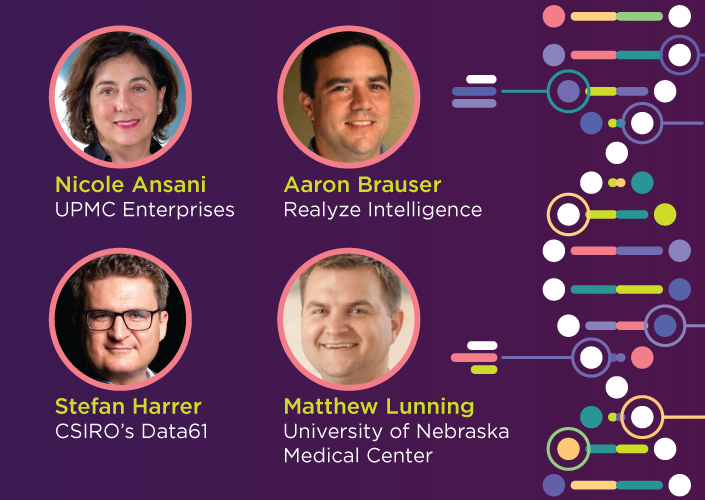Recapping the CCM’s webinar on digital health tools, which featured experts from UPMC, Providence, Xealth, and Abridge
Use of telemedicine, virtual care, and other digital tools accelerated significantly as the COVID-19 pandemic took hold earlier this year.
For some health systems, that meant digital health projects that had been in development and testing were thrust into production as in-person care was paused. Large health systems such as UPMC and Providence, for instance, experienced huge upticks in the use of telemedicine – growing from hundreds of visits a day pre-pandemic to thousands a day during the pandemic.
An important question for health systems has arisen as more hospitals and clinics reopen: How do they sustain the “new normal” where digital tools are an integral component of patient care?
Expert panelists answered this question and more during a Center for Connected Medicine (CCM) webinar broadcast on July 23, 2020. Keep reading for highlights from the conversation, which featured the following panelists:
- Sara Vaezy, Chief Digital Strategy & Business Development Officer at Providence
- Shiv Rao, MD, CEO and Co-Founder at Abridge
- Mike McSherry, CEO of Xealth
- Gretchen Mendoza, Senior Director of Product Management at UPMC Enterprises (Moderator)
Building on the momentum
Vaezy made three points that are important for sustaining the use of digital tools and virtual care.
First, the loosening of regulations around delivering telemedicine needs to be maintained, while making sure that measures should be taken to protect patients. Health systems need flexibility to deliver care via telemedicine.
Second, reimbursement for telemedicine and other virtual care services needs to remain in place. Vaezy noted that digital tools can be a mechanism for lowering the cost of care and reimbursement rates should reflect that. But private and government payers need to continue providing reimbursement to health systems.
And finally, Vaezy recommended that digital technology used by providers needs to be simple and seamless so that clinicians will want to continue using it even after they can return to in-person care.
“We need to ensure that the provider experience is good and build the underlying technology enablement to ensure that that happens,” Vaezy said.
More digital touch points needed
McSherry echoed Vaezy’s points about regulations and reimbursement being essential to sustainability. And he said that traditional health systems could be forced by consumers and their insurers to provide convenient and lower-cost options to an office visit. “They’re either going to seek the convenience and cost or go somewhere else,” he said.
“I think the whole spectrum of consumer-driven health care is going to start to mandate more digital touch points and engagement across both telehealth but all the ensuing disease-state management and preparatory education, and the patient monitoring tools,” McSherry said.
Noting that while telemedicine is convenient for patients, Rao said the technology also has created new challenges that need to be addressed.
For example, the brevity of some telemedicine visits coupled with being at home and not in a clinical setting, may make it more difficult for some patients to recall everything that was discussed or ordered by the physician.
“What we were hearing from people was that one of the new challenges was being able to capture the details of those conversations that are potentially a lot shorter than they used to be,” Rao said. “Health systems are contacting us, a patient-centered and controlled product, and figuring out how they could use or benefit from it.”
Digital health tools resources from the CCM
Learn about how CCM partner UPMC ramped up telemedicine to address patient care during the pandemic.
And find out from a UPMC executive why health systems must prioritize the digital patient experience.
Read the CCM’s February 2020 research report, “The Future of the Digital Patient Experience,” which highlights several mileposts on the journey to using digital tools at health systems.
Watch videos featuring CCM contributors discussing digital health tools:



